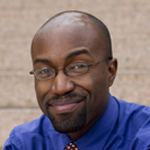Jason Purnell, PhD, Assistant Professor, Brown School
Martin Luther King Jr. and the modern Civil Rights Movement, of which he was a chief architect, have been referred to often in the past few months here in St. Louis. Those references are just as often pointed and poignant as they are hazy, nostalgic and a touch sentimental. Some young activists have taken to social media comparing their efforts to King’s – and others have faulted him and his generation for leaving the work of racial equality woefully undone. Some of this is right, and some of it is wrong.
For those of us chiding the young for the youth, it is worth noting that Martin’s public life began at the age of 26. He was not chosen to lead the Montgomery Improvement Association (MIA) for his impressive a resume – he had not yet finished his doctoral studies in Boston; he was not yet “Dr. King.” Rather, he had so little a track record it was difficult to weigh him down with the baggage the older clergy carried.
Despite his youth, he had a gravity to his bearing and a gift for soaring oratory. The short and stocky, middle-class son of a prominent Atlanta preaching family stirred the crowd to a near frenzy at the first MIA mass meeting. You hear it first at the line, “There comes a time when people get tired of being trampled over by the iron feet of oppression.” Someone has finally given voice to a pent up sense of spiritual weariness. It is still gripping to hear it nearly 60 years later.
As I sat at a Ferguson October mass meeting in Chaifetz Arena several weeks ago, the comparisons and contrasts kept coming. While a moving link was made to a bygone era in the singing of “Woke Up This Morning with My Mind Stayed on Freedom,” the young protest leaders ultimately made clear that this was “not your father’s civil rights movement.”
They were right and wrong. Of course, what is happening in our region today must be connected to history: King’s generation and before it, back through W.E.B. Du Bois, Marcus Garvey, Ida B. Wells-Barnett, and Booker T. Washington, on to Frederick Douglass and the abolitionists and suffragists he called friends and colleagues, to the earliest efforts to eke out freedom for people of African descent in a strange land across the ocean from their ancestral homes.
At a deeper level, the contrast has to do with a history that has passed since King, though. His vision of integration makes a generation raised on multiculturalism very uncomfortable, if not downright hostile. To many his “dream” of interracial brotherhood seems quaint. His use of the term “brotherhood” stands in contrast to our own time, when women’s voices in struggle are rightly heard with greater force and frequency. And his commitment to nonviolence, steeped in equal parts Gandhian sociopolitics and Christian ethics, fails to resonate in still other quarters.
But as deeply as I believe King held onto his dream and was animated by it from within, there was also a vital method to it. King was not only a masterful practitioner of civil disobedience; he was also a skillful strategist and communicator. Even in that first address, he carefully tied the struggle of Montgomery blacks to the American project (“If we are wrong, the Supreme Court of this nation is wrong … the Constitution of the United States is wrong”) and to the Judeo-Christian tradition (“If we are wrong, God Almighty is wrong … Jesus of Nazareth was merely a utopian dreamer that never came down to earth”). That framing is crucial. If you miss that, you have missed King.
The night before he was killed, Martin Luther King Jr. said words whose truth haunts us at this hour in St. Louis: “We’ve got some difficult days ahead.” It is a final speech in which an older King exhorts the crowd to boycott and to protest for a now expanded agenda of economic opportunity and racial justice. But in the face of the difficult days ahead, his eyes are towards the “mountaintop” and a vision of the “promised land.”
He leaves us with a faith-forged certainty that “we as a people will get to the promised land.” This may not be our fathers’ or our mothers’ movement, but what they have done and how they have led does inform this moment. We have the choice to “stick together,” as a 26-year-old King encouraged the crowd to do that December of 1955, or to fall apart. They walked for 381 days in Montgomery. It will take the energy of youth and the wisdom of our shared history to continue the long march toward freedom in 2014.
Read article in St. Louis American
